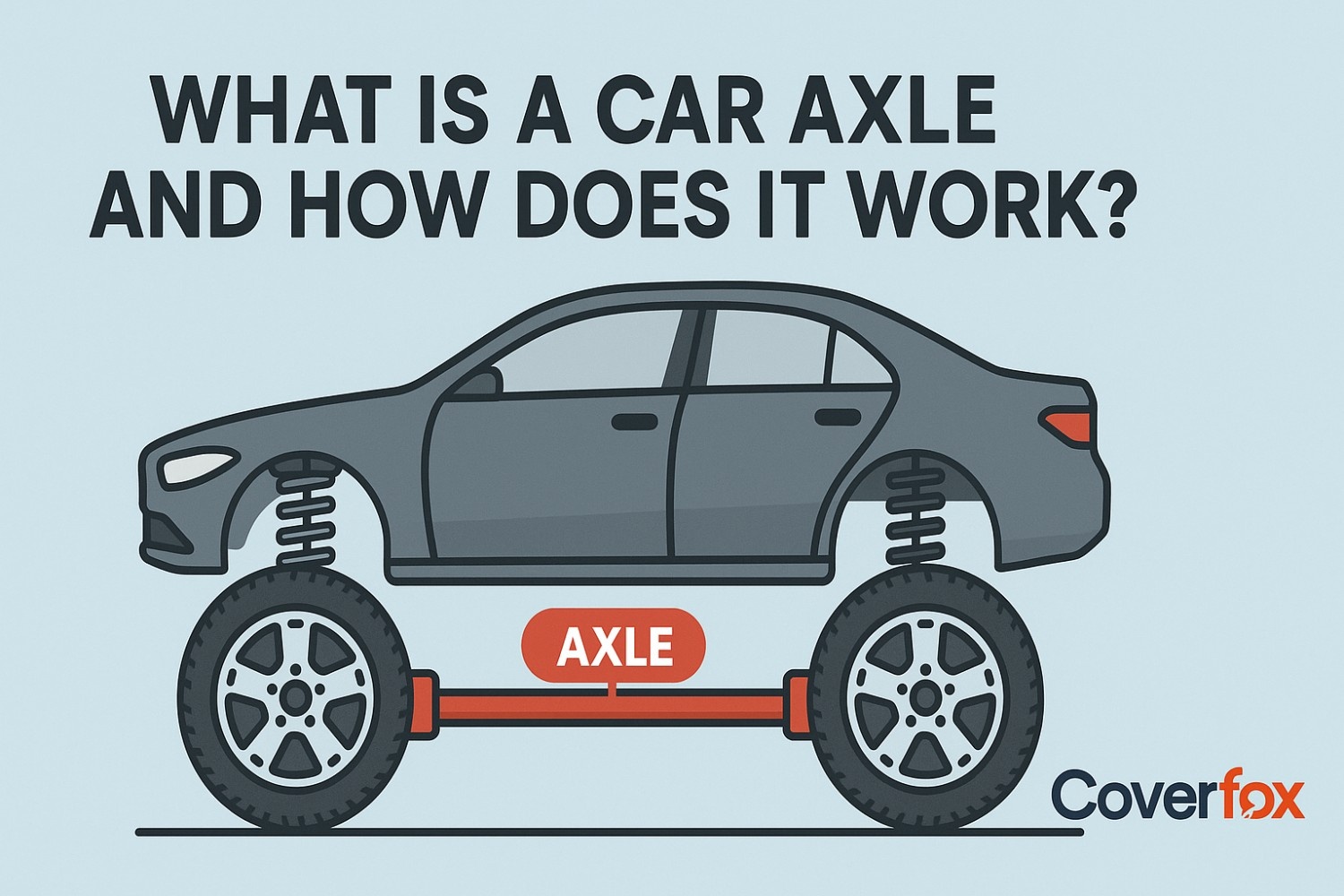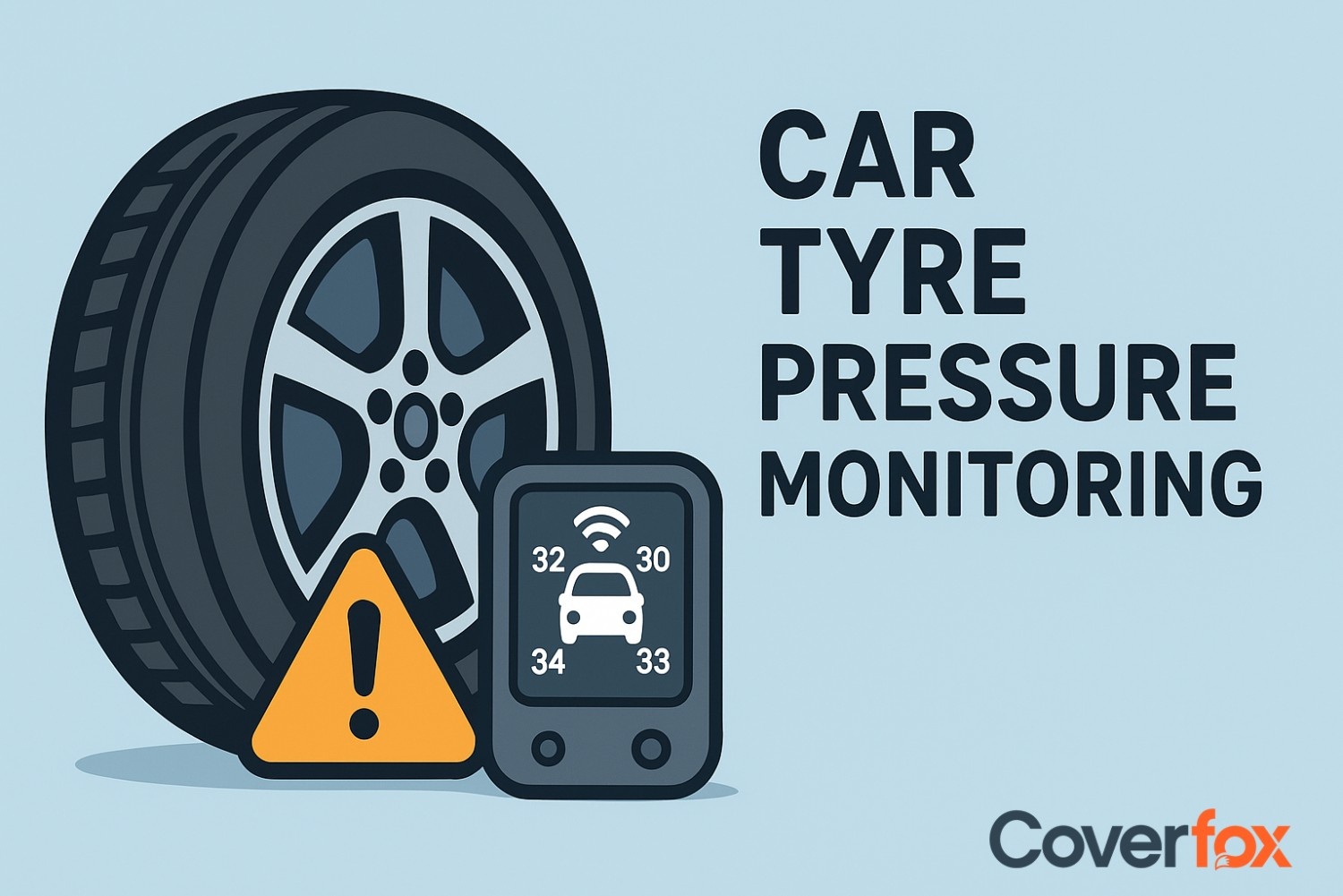Multiple parts of a car, whether small or large, work in unison for the car to function properly. As we know, a car’s body weight is hundreds of kilos. Just like how knee joints support the weight of the entire body and connect the bottom of the legs to the human body, a car axle helps stabilise the weight of the car and allows the wheels to turn in coordination.

This often unlooked part of the car is a crucial component of the four-wheeler, maintaining complete functionality and structural integrity of the vehicle. Let's learn more about car axles, their importance, and how they work in this article.
What is a Car Axle?
A car axle is a metal shaft that connects your car’s wheels and helps them rotate. It's a crucial part of the vehicle’s functioning and suspension system. The axle does two main jobs:
- It supports the weight of the car, including the passengers and cargo.
- It transfers power from the engine to the wheels, allowing the car to move.
Depending on the type of vehicle, a car can have two or more axles—usually one for the front wheels and one for the rear wheels. In vehicles with front-wheel drive, the front axle also handles steering and power delivery. In rear-wheel drive, the rear axle does most of the power transfer.
How Do Car Axles Work?
Here is how car axles help in the functioning of a car:
1. Power is Generated by the Engine
Your car’s engine creates power, but that power needs to reach the wheels.
2. Transmission Transfers Power to the Driveshaft
The transmission controls how much power is sent and passes it to the driveshaft.
3. Driveshaft Sends Power to the Axle
The driveshaft delivers rotational force (torque) to the axle.
4. Axle Transfers Power to the Wheels
The axle spins and sends this torque to the wheels, making them turn and move the car.
5. Axles Support the Car’s Weight
At the same time, axles bear the load of the vehicle, like your legs holding you up while walking.
6. Steering and Suspension Work with Axles
In front-wheel or all-wheel drive cars, axles work alongside suspension and steering systems, flexing and rotating as you turn or go over bumps.
Key Components of a Car Axle
The key components of an ideal car axle include:
- Axle Shaft: The rotating rod that transfers torque to the wheels.
- CV (Constant Velocity) Joints: Allow smooth power transfer while accommodating wheel movement.
- Differential: Splits engine power between wheels and allows them to rotate at different speeds.
- Bearings: Reduce friction and support smooth axle rotation.
- Axle Housing: Encases and protects the axle shaft and internal components.
- Seals: Prevent leakage of lubricants and protect against dirt or debris.
- Flanges: Connect the axle shaft to the wheel hub or other parts.
Functions of the Car Axle
Steering, weight holding, transferring power to the wheels, etc, are the major functions of the car axle. Here are the functions of car axles, explained in detail:
Support Vehicle Weight
Transmit Power to Wheels
Maintain Wheel Alignment and Position
Enable Steering (in Front Axles)
Absorb Road Shocks and Stress
Support the Braking System
The axle holds the entire weight of the vehicle, including the body, passengers, and cargo.
The car axle transfers torque (rotational force) from the engine and transmission to the wheels, helping them to rotate and move the vehicle forward or backwards.
Axles help keep the wheels in proper position and alignment relative to the car’s body and suspension.
In front-wheel drive or all-wheel drive cars, the front axle also facilitates steering movements while transmitting power.
The axle helps absorb and distribute shocks from uneven roads, working alongside the suspension system.
Brakes are often mounted near the axles, so the axle also provides mounting support and stability during braking.
Different Types of Car Axles
Car axles come in different types, depending on the location of the car axle below the car. These different types of axles are:
Front Axle
Rear Axle
Stub Axle
The front axle is located at the front of the vehicle. The primary function of the front axle lies in steering and absorbing the shocks that come from uneven road surfaces. It supports part of the vehicle’s weight and connects the front wheels, helping them rotate as you steer. In many front-wheel-drive cars, it also helps transmit power from the engine to the wheels.
The rear axle is situated at the back of the car and is responsible for transferring power to the rear wheels, especially in rear-wheel-drive vehicles. It’s typically made of two halves joined by a central differential, which allows the wheels to rotate at different speeds—essential for turning smoothly. It also helps support the weight of the rear part of the vehicle.
A stub axle is a short, pivoting axle attached to each front wheel of a vehicle. It's connected to the front axle through a component called a kingpin. The stub axle allows the wheels to turn left or right for steering. It’s commonly found in light vehicles and allows for better control and handling, especially during turns.
Why Are Car Axles Important?
As knee joints are essential for carrying the weight of the body and helping the leg turn while walking, car axles are essential to hold the weight of the car, while helping the wheels move in unison. Here is why the axles of the cars are important:
1. Power Transmission
Main component for the transfer of power from the engine to the wheels – for movement.
2. Load Bearing
Supports the weight of the car, with the people and goods inside it.
3. Steering & Suspension
Front axles help with steering, while all axles work with the suspension system to absorb shocks.
4. Stability & Balance
Proper axle function ensures your wheels stay aligned and balanced during movement and turning.
Common Problems with Car Axles
It is important to understand that car axles are not covered under a car insurance policy – unless they are damaged in an accident. Here are common problems with car axles:
Worn-Out CV Joints
Bent or Broken Axles
Leaking Grease or Lubricant
Unusual Vibrations or Noises
Misalignment
Constant Velocity (CV) joints, especially in front-wheel-drive cars, can wear out easily due to the lack of lubrication or torn CV boots.
Usually caused by accidents, potholes, or collisions. A bent axle can cause vibrations, uneven tire wear, and poor handling.
If the axle seals or CV boots are damaged, grease may leak, leading to friction and further damage.
A damaged axle may cause rhythmic vibrations or clunking noises, especially during acceleration or turns.
If the axle is misaligned, it affects handling and tire wear, making the ride unstable.
How to Choose the Right Axle for Your Car
Which type of axle suits your car the best is a question that you will come across while choosing the right axle for your car. Generally, these are pre-fitted and added to the description of the car. But, if you wish to customise or change it, here’s what you need to know for choosing the right one:
Vehicle Requirement
Driving Conditions
Drive Type
Performance Needs
Material and Build Quality
Begin by identifying your vehicle’s make, model, and year to ensure you select the correct axle type that works with your car.
For off-road or rough terrain, opt for a stronger, heavy-duty axle. For everyday city driving, a standard axle is usually sufficient.
Whether your vehicle is front-wheel (FWD), rear-wheel (RWD), all-wheel (AWD), or four-wheel drive (4WD), the axle type will vary accordingly.
If performance enhancement is your goal, go for axles built from high-strength materials that can withstand added power.
Choose axles crafted from durable materials like alloy steel to ensure long-term strength and reliability.
Summing Up
Understanding each and every component of your car helps you understand your car better, and you can make informed decisions while upgrading or customising your car. Every part is equally important for the proper functioning of the car and should not be overlooked just because they are not the “engine” of the car. One such important factor is car insurance – do not travel without as you will be open to liabilities and repair costs that will eat your savings.
Also Read:
Different Types of Suspensions and How They Work
What is Car Damping and its Benefits?
What is a Car Bonnet? Understanding Functions & Importance
Frequently Asked Questions
How many axles does a typical car have?
Typically two.
What is the purpose of a car's front axle?
The front axle supports the front of the vehicle, enables steering, and absorbs shocks from the road surface for a smoother ride.
What components make up a typical automotive axle assembly?
The axle shaft, CV joints or U-joints, bearings, differential, and housing
How often should I lubricate my car's axles?
During regular maintenance intervals, typically every 30,000 to 60,000 km, or as recommended by the manufacturer.
What are the signs of a damaged axle?
Common signs include loud clunking or clicking noises, vibrations while driving, difficulty steering, or grease leaking near the wheels.





